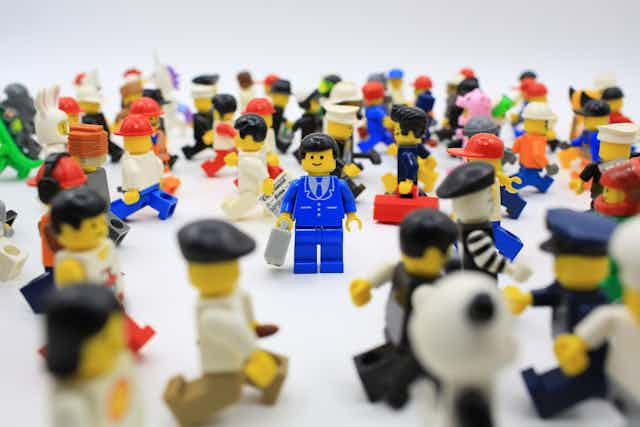Every single person is different. We all have different backgrounds, views, values and interests. And yet there is one universal feeling that we all experience at every single moment. Call it an “ego”, a “self” or just an “I” – it’s the idea that our thoughts and feelings are our own, and no one else has access to them in the same way. This may sound a bit like post-war French existentialism or psycho-analysis, but it’s actually a topic that’s being increasingly addressed by neuroscientists.
We were part of a team interested in finding out how this sense of self is expressed in the brain – and what happens when it dissolves. To do that, we used brain imaging and the psychedelic drug LSD.
Our sense of self is something so natural that we are not always fully aware of it. In fact, it is when it is disturbed that it becomes the most noticeable. This could be due to mental illnesses such as psychosis, when people might experience the delusional belief that their thoughts are no longer private, but can be accessed and even modified by other people. Or it could be due to the influence of psychedelic drugs such as LSD, when the user can feel that their ego is “dissolving” and they are becoming at one with the world. From a scientific point of view, these experiences of “ego death” or ego dissolution are also opportunities to search for this sense of self in the brain.
Our study, led by Enzo Tagliazucchi and published in Current Biology, set out to probe what is happening in the brain when our sense of self becomes altered by psychedelic drugs (link to Enzo’s paper). We studied 15 healthy volunteers before and after taking LSD, which altered their normal feelings of their selves and their relationship with the environment. These subjects were scanned while intoxicated and while receiving placebo using functional MRI, a technique which allows us to study the brain’s activity by measuring changes in blood flow. By contrasting the activity of the brain when receiving a placebo with its activity after taking LSD, we could start exploring the brain mechanisms involved in the normal experience of the self.
A holistic understanding
Results of this study showed that the experience of ego-dissolution induced by LSD was not related to changes in only one region of the brain. Instead, the drug affected the way that several brain regions were communicating with the rest of the brain, increasing their level of connectivity. These included the fronto-parietal region, an area that has previously been linked to self awareness, and the temporal region, an area involved in language comprehension and creating visual memories. The brain on LSD would therefore be similar to an orchestra in which musicians are no longer playing together in time, rather than an orchestra in which some are missing or malfunctioning.

In a previous paper, we showed that the brain tends to organise itself into groups or modules of regions working closely together and specialising in a specific activity, a property called modularity. For example, the brain regions specialised for vision are normally organised as a module of the human brain network. LSD disrupted this modular organisation of the brain – and the level of modular disorganisation was linked with the severity of ego-dissolution that volunteers experienced after taking the drug. It seems the modular organisation of the healthy brain works as the scaffolding that allows us to maintain a sense of self.
But on a more fundamental note, these results highlight that a full understanding of the brain will never be complete unless we focus on the connectivity between regions as part of a complex network. This is irrespective of the level of microscopic detail we might have about what a single region does. Just as a symphony is fully appreciated only when one listens to all members of the orchestra playing it together, and not by studying each individual instrument separately.
By investigating the psychedelic effects of LSD with brain scanning, we can open the doors of perception to discover how the familiar, egotistical sense of self depends on a particular pattern of brain network organisation. Our sense of individuality may be down to the overall configuration that emerges from the interactions of multiple brain regions. When this organisation is disrupted by LSD, and particularly when the modular organisation falls apart, our sense of self, and the distinct boundaries between us, the environment and others might be lost.

